Looking for a unique place to play golf? We’re guessing you haven’t tried all of these courses.
We’ve been living in unique times and faced unique circumstances in which we either couldn’t play golf or could only continue to do so under unique conditions. While we’d like to think those days are firmly in the rear-view mirror, the COVID-19 era has still given us cause to reflect on life, golf and the many ways in which the two intertwine.
As everyday life slowly returns to normal, it’s natural that our inclination to journey to golf destinations both familiar and uncharted increases. First for many golfers came a desire to reconnect with the well-known – your home club and fellow members or regular playing companions. Inevitably, however, the yearning to spread one’s wings and venture elsewhere takes hold. It might be to a destination rich in memories of past enjoyment, but it could also be to places yet to be explored.
Chances are you know plenty of ‘bucket-list’ golf destinations, both in Australia and abroad. You perhaps have even mapped out several future golf itineraries. As an alternative, though, we’ve come up with a selection of additional options – places in Australia you probably haven’t been to and possibly haven’t even heard of before. There’s a distinct desert theme running through this collection and while these might not make your travel list for
2022, they should be on your list at some stage, especially if you like golf courses with a difference.
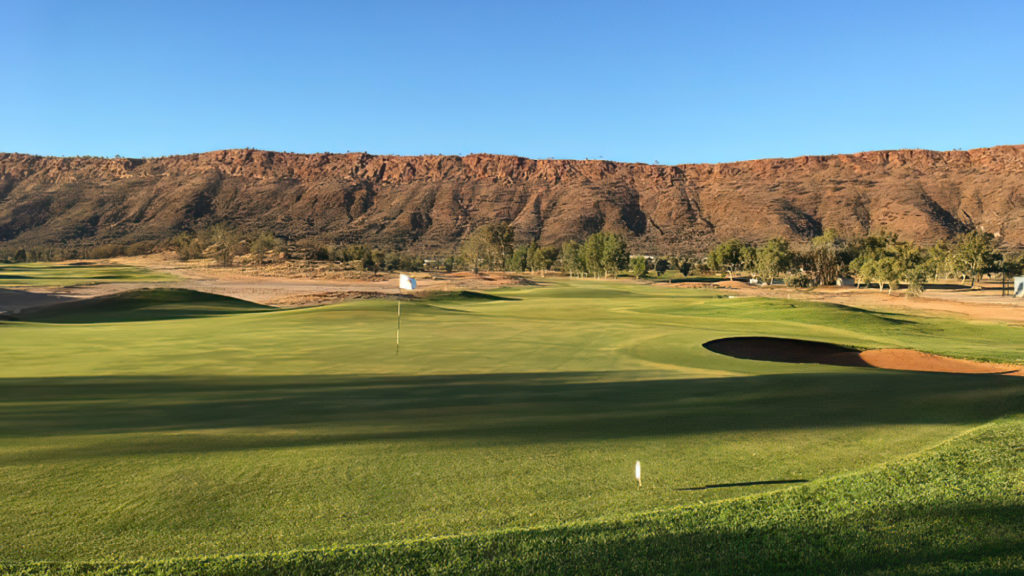
A COURSE LIKE ALICE
If the landscape doesn’t immediately give it away, the first clue you’ll detect that Alice Springs Golf Club is a course like no other comes when a local tells you that the wind always blows from the coast. At first it sounds like an innocuous enough comment. Then you remember where on the map you are; and the penny drops. It’s a brilliant Alice nugget that leaves you quizzical and smiling at the same time.
Australia’s original top desert course illustrates how great golf can be found in even the most remote parts of our wide, brown land. With the stunning MacDonnell Ranges as a backdrop, the Alice Springs layout weaves across the rugged terrain on the edge of town beside the Todd River. While unforgiving away from the prepared surfaces, the proper parts of the course are surprisingly lush and verdant for such an extreme climate.
Another word of advice: carry a ‘rock iron’. It might not save you from making a ding-free escape from the desert, but it will concentrate any damage to a single implement.
SHARK SWOOPING LIKE A HAWK
Potential is always something of a dirty word to hang around the neck of a golf course, largely because it implies a lack of finesse or polish. However, if there’s an instance when the ‘P-word’ can be used with accuracy, it’s for Hawks Nest Golf Club. The club in the sleepy holiday town on the northern side of Port Stephens harbour on the New South Wales coastline has long had a brilliant piece of land on which to play – and a very decent layout, too – but it feels capable of more. Sandy soil and a seaside location tick a pair of key boxes and the course is enjoyable as well as being user-friendly.
So maybe it’s of little surprise to learn that Greg Norman’s design firm is eyeing the site – plus an adjacent 1.4-hectare pocket of land to develop residentially – as a potential (there’s that word again) top-echelon golf venue. Norman has called the Hawks Nest site an “amazing parcel of land”, while his design and construction development arm has been in talks with property owners Core Leric since last March. Watch this space.

EYES ON ISA
Norman spent the first three months of his life in Mount Isa, although naturally the baby Shark didn’t wield a club there in early 1955. Which is a shame, for he would have walked (crawled?) away with a lasting memory. The course is the only one in north-western Queensland with grass greens and the 18-hole layout uses its barren environment to full effect. “Our rocks are our bunkers,” laughs secretary-manager Margie McDonald of the sand-less course.
The past three years has seen a focus on improving the layout’s irrigation. All tees, greens and almost all the fairways are now grassed, which is a vast improvement from when the fairways were almost dirt and rock. “We’ve now got very distinctive fairways and a little bit of a rough and then the ‘rough’ rough,” McDonald says of the desert terrain. “It’s quite a challenging course, actually. We get a lot of players who come from down south that play off fairly low handicaps and it’s quite challenging for them. People love the course. They’re quite surprised we’ve got such a well-kept course – grass on it out in the Outback. A lot of people come here expecting it to be a lot more dirt.”
If you’re contemplating a road trip, this winter Mount Isa will host the penultimate stop of the Outback Queensland Masters [see the end of this article].
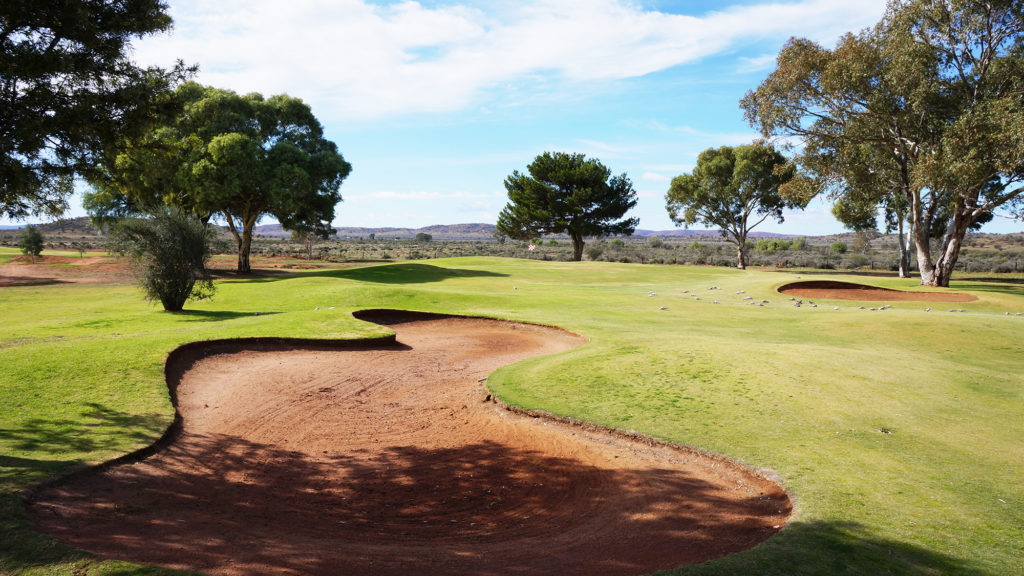
GOING FOR BROKE
The term ‘off the beaten track’ is perhaps over-used in golf and needs something of a reality check at times. At Broken Hill in far western NSW, a place so close to neighbouring South Australia it can almost touch it, the notion of unexpectedly finding yourself in town is unlikely. One doesn’t just ‘pass through’ Broken Hill. The Silver City is home to nearly 20,000 residents, although it used to be many more. A place of that size and remoteness deserves a decent golf course, and it got one.
Calling Broken Hill Golf Club an oasis in the desert is not a stretch of the truth, making the 18-hole excursion on offer well worth the journey to get there. Strips of lush green fairways contrast with the ochre-hued bunkers and arid surrounds beautifully, while the layout is home to a range of classic outback Australian fauna. The test is strong without being impossible, while for a place that receives only about 240 millimetres of annual rainfall, you’re unlikely to have to pass up a tee-time due to wet weather.
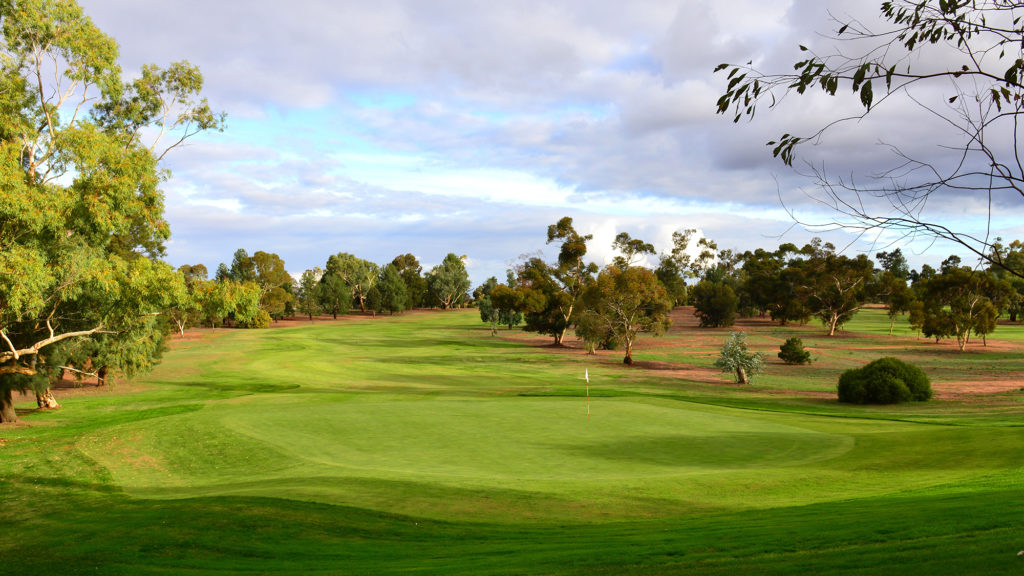
FUN IN THE SUNLAND
Four hundred or so kilometres south-west, there’s an oasis-like region of South Australia where orchards and grape vines sit side-by-side near the Murray River. The fertile soil and proximity to the river that is such a benefit for agriculture has also given rise to a series of fine golf courses. The pick of the Riverland layouts is arguably Waikerie Golf & Country Club, which sits just outside the town of the same name. The course was originally established in the 1960s on a vacant wheat paddock in the area known locally as Sunlands. Re-designed to its current layout by Brian Crafter in 1969, with oiled sandscrape putting surfaces, it was eventually planted by a team of dedicated local volunteers over the long hot summer of 1987. Today it boasts lush green fairways contrasted by its rich red sand.
There are no bunkers and no water hazards, but a sneaky number of holes line out-of-bounds and all the greens feature false edges to have them play smaller than they look. Instead of hazards, the course staff leave the rough long once the ball trickles off the green.
NUGGET OF GOLD
It’s big, it’s brawny and it’s remote but it’s also wickedly good. Kalgoorlie Golf Course – designed by the pride of Kalgoorlie, Graham Marsh – is a golf oasis in one of the most harsh and unforgiving sections of Australia. Now a regular stop on the PGA Tour of Australasia, the course has built a reputation as a tough challenge in a tough environment. “I distinctly recall my first design visit,” Marsh wrote for us in 2017. “As I roamed the site my mind was racing; this was my opportunity to design Australia’s first genuine desert golf course. With the inevitable closing of the iconic ‘Super Pit’ in the foreseeable future, a landmark that has so much defined the city’s history, just maybe the Kalgoorlie-Boulder Golf Course will be the little nugget of gold that will transcend time and prevail long after the last veins of gold-bearing ore have been extracted and processed.”
At the time of writing, the WA border was scheduled to re-open on February 5 and Kalgoorlie awaits…
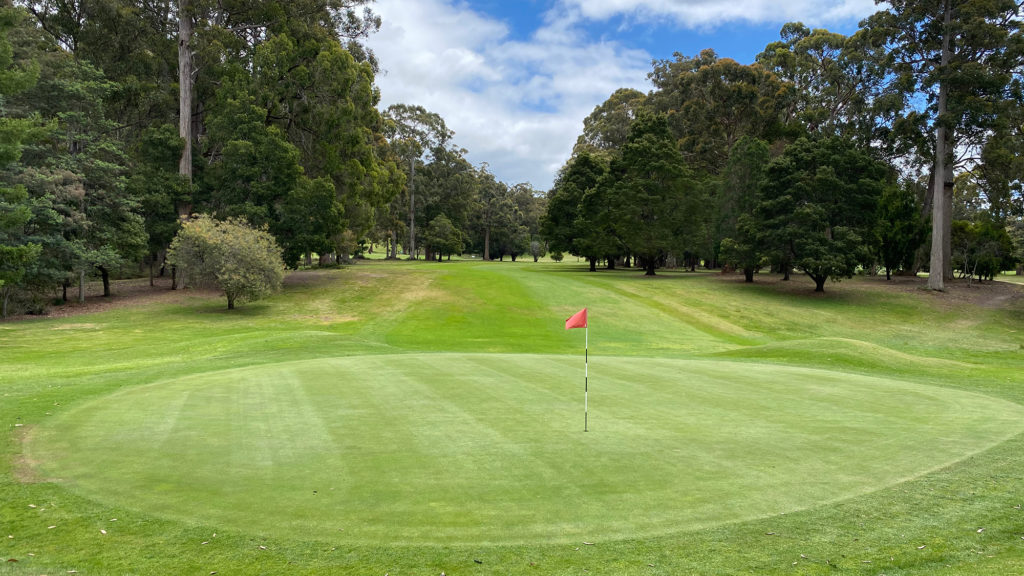
FOREST FORAGE
If you like serenity and isolation during a round, make sure Ulverstone Golf Club is on your Tasmanian golf list. A short drive west of Devonport on the edge of the town of the same name, Ulverstone is golf inside a pure forest. Every hole is flanked by tall timber that allows well-struck shots to echo between the eucalypts while also providing a pervading sense of solitude. There can be 120 people on the course and it still feels like you’re alone.
Designed by Al Howard on the banks of the River Leven, the Ulverstone layout is a repetitious exercise in straight hitting. A mere seven bunkers dot the 18 holes, although more sand isn’t necessary to defend most holes; the tight fairways and walls of trees do a perfectly good job of that. Add to that mix small but pure greens where there is just enough greenside undulation to make matters difficult when approach shots fail to find their target.
The layout might be tight but it’s not suffocating. The club shares its course maintenance staff with nearby Devonport Country Club, and they
do an excellent job of keeping the vegetation sparse at ground level. So while your errant tee shots might rattle around in the trees, once the ball falls to ground, chances are you will have some hope of threading a recovery shot between the trunks. The course opens up a fraction in the area beside the clubhouse, both nines finishing with uphill par 3s where golfers enjoying a beverage have an ideal view of players navigating their final swings.
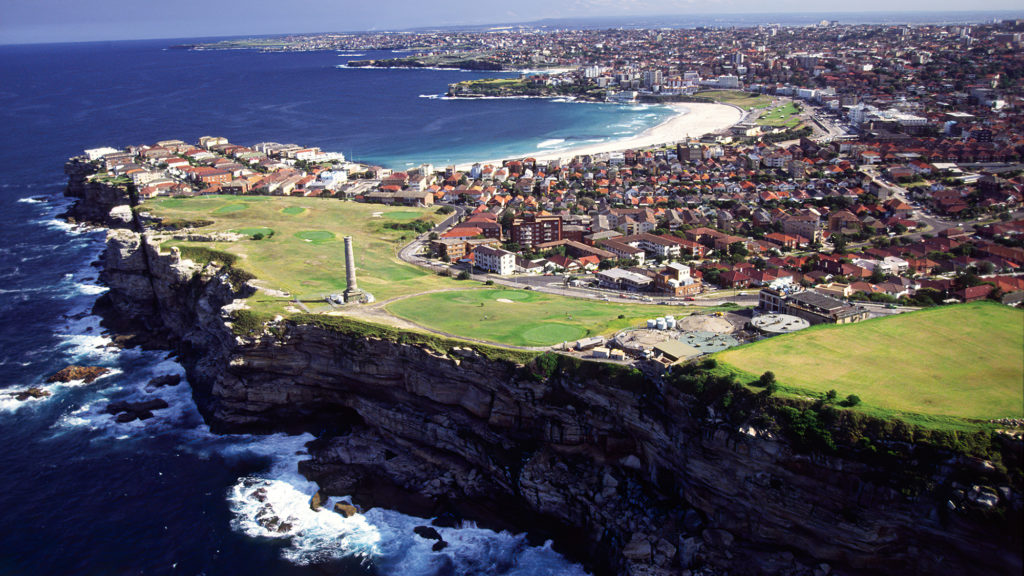
DIG THIS VIEW
Not that we’d ever advocate it, but if Bondi Golf & Diggers Club were ever sold off for real estate, only the “Twiggy” Forrests and Gina Rineharts of the world would be able to afford it. So the fact that some of Sydney’s most prized land is instead ‘owned’ by golf – with green fees from as low as $20 – is a tremendous win within what might be the nation’s most famous suburb. The club also boasts a relaxed dress code where comfort tops tradition, while it claims to offer the fastest rounds in Sydney for those for whom time is tight.
Eighteen years ago the club merged with North Bondi RSL, which explains the name change. The course is elementary but fun, notable for not just its majestic clifftop location but also for the monument at the edge of the course, which is a ventilation tower linked to the Bondi sewage treatment plant.

LIFE’S A BEACH
Discovering a surprisingly good nine-hole layout is an underrated pleasure in golf. Falling comfortably into that category is Tathra Beach Country Club in the Sapphire Coast region of southern NSW. Occupying an L-shaped piece of land where the Bega River hits Boulder Bay, the Tathra Beach course is one that’s easy to overlook among the more vaunted 18-hole options in the area, but it shouldn’t be. Whether you make one loop or two, the golf course gives visitors a neat and uncomplicated layout for a bargain green fee (also $20 for nine) in a charming beachside location.
The pick of the holes at Tathra is the par-5 second, a half-kilometre excursion along the river’s edge where a wild miss to the right invariably leads to a humiliating splash – which is precisely the sound golfers’ weary bodies should make at the nearby beach shortly after any round played during the peak of summer. Which is right now.
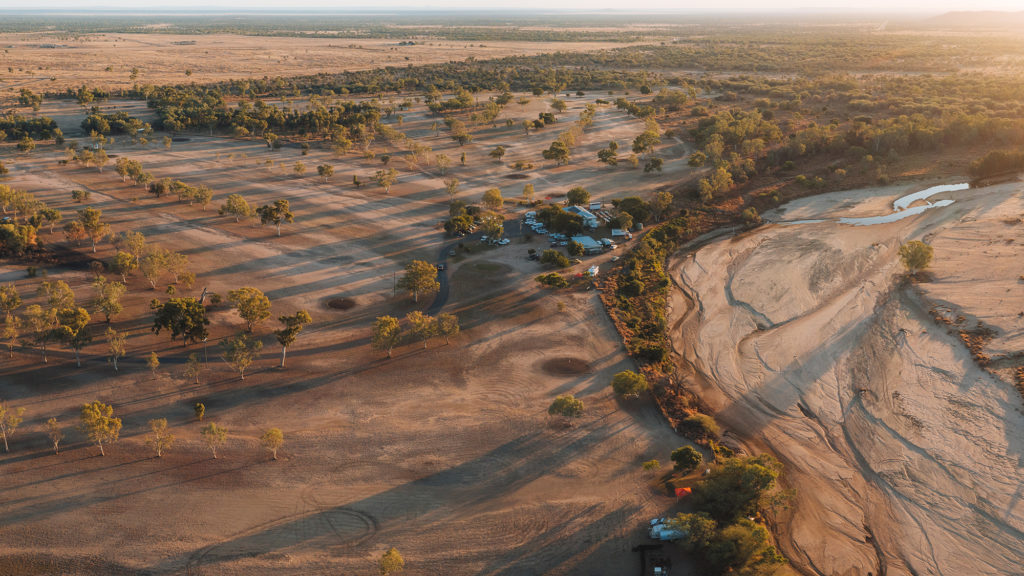
Getting down ’n dirty
Australia’s unique and most remote golf series returns this coming winter, spanning more than 2,000 kilometres across Queensland’s Outback.
The Outback Queensland Masters is the country’s richest amateur golf event, with regular and first-time golfers savouring a pro-style experience by competing for $10,000 hole-in-one opportunities in the first five locations and culminating in the million-dollar hole-in-one challenge at Birdsville. During the 2021 event, David Pennell, an amateur golfer from the ACT, struck it rich with a $10,000 hole-in-one on the remote sand greens of Quilpie Golf Club.
The Outback Queensland Masters attracts first-time, social and club golfers to meet and play with locals, and in the evenings dine under the stars of the Milky Way with live Australian music and entertainers. Players are already planning for the 2022 event, with the courses of Roma, Tambo, Barcaldine, Winton and Mount Isa hosting the series, with the million-dollar hole-in-one taking place at Birdsville on the edge of the Simpson Desert.
“The Outback Queensland Masters has been really good,” said past competitor Robbie Fitz. “Golf and meals organised every weekend for six weeks and five days in between to wind your way to the next venue. I would highly recommend the tour.”
Luke Bates, Golf Australia’s Queensland and Northern Territory manager, said it was like a travelling golf club with “everyone creating memories together”.
Presented by Golf Australia, the Outback Queensland Masters is strategically partnered with Tourism and Events Queensland, with support from local government councils and local golf clubs. The 2021 event sold out ahead of the event, and with more than 60 per cent of tickets already sold for 2022, organisers are encouraging visitors to plan and book now for this year’s event before it sells out.
The Outback Player Pass for one location (including all meals and dinner under the stars) is $300. The All-Inclusive Player Pass, including six locations and the million-dollar hole-in-one (plus all meals and dinner under the stars) is $1,660. Spectator passes, including meals and dinner under the stars, are also available from $220. Visit outbackqldmasters.com for more.
2022 schedule
Roma June 18-19
Tambo June 25-26
Barcaldine July 2-3
Winton July 9-10
Mount Isa July 16-17
Birdsville July 22-24



